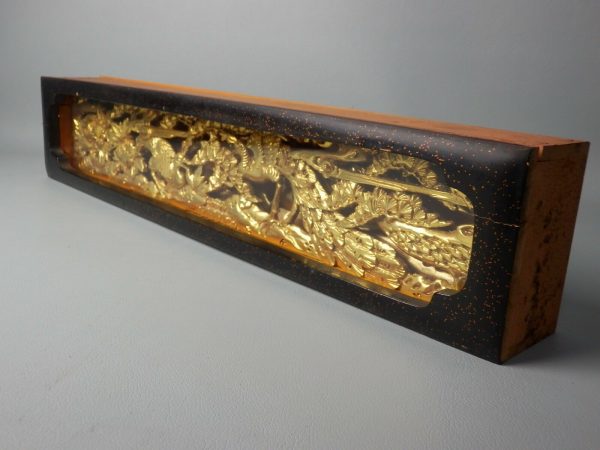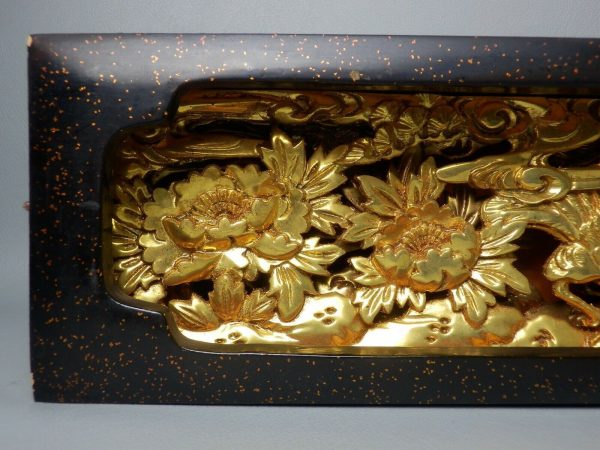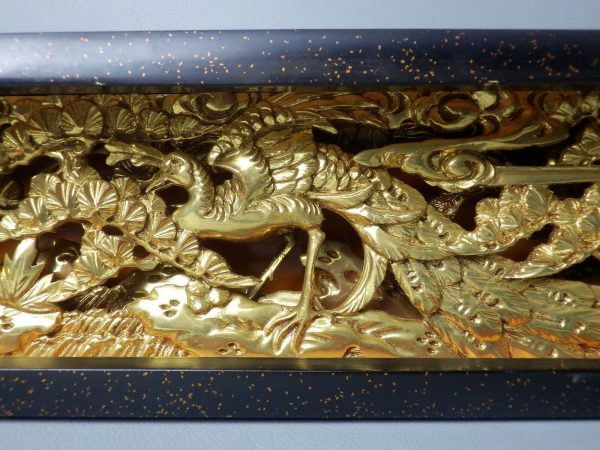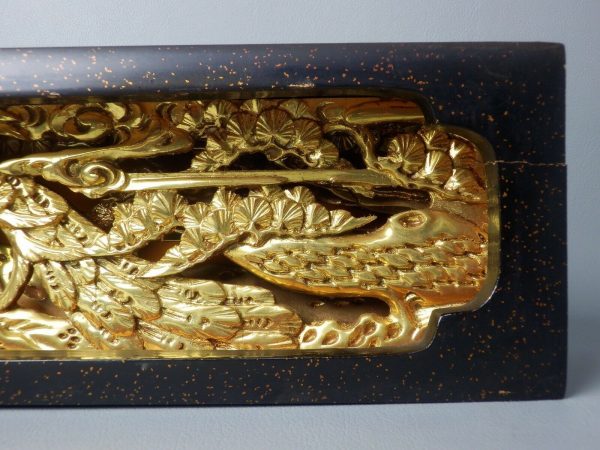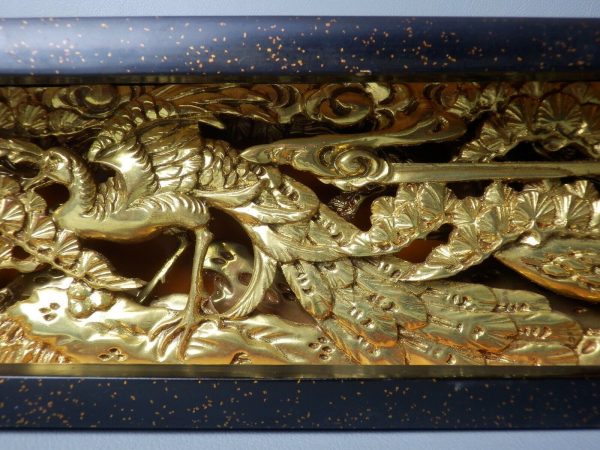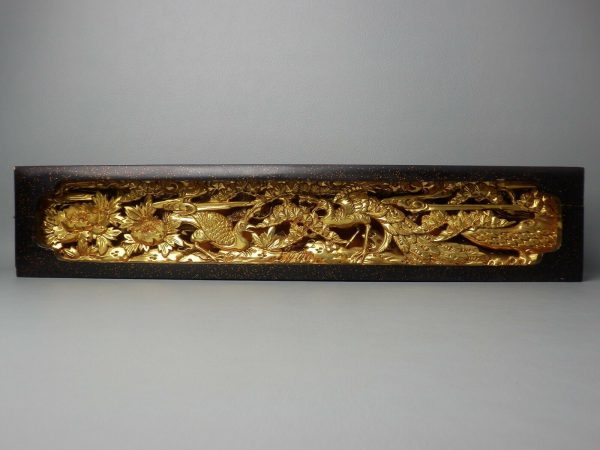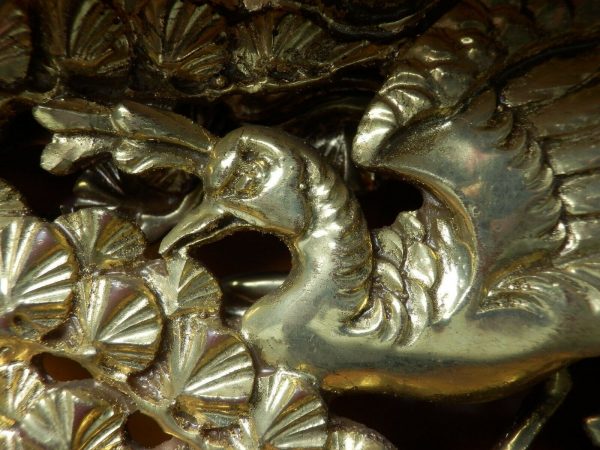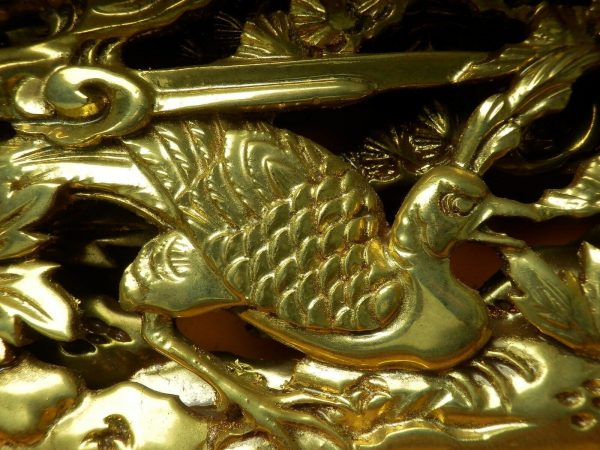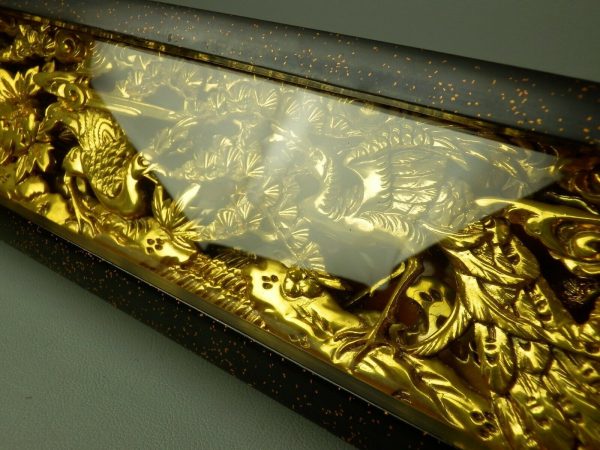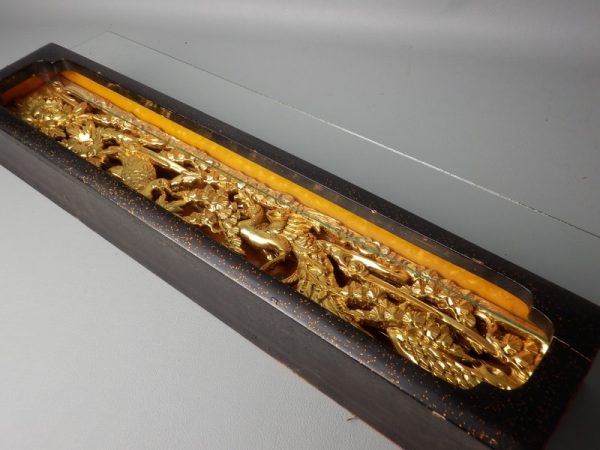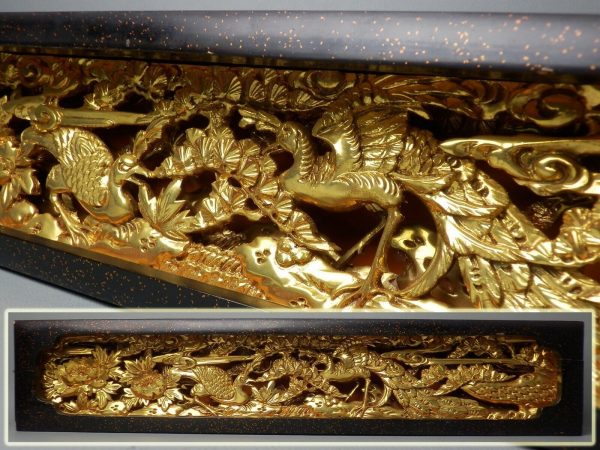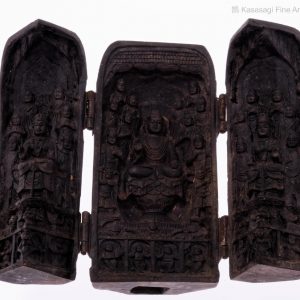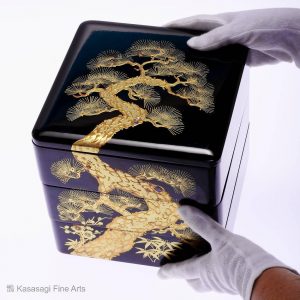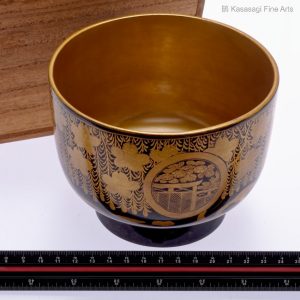Antique Framed Japanese Shrine Ranma
$280.00
An early 1900s ornately hand carved and Framed Japanese Shrine Ranma from a Buddhist Temple. A hand carved panel gilt lacquered gilt featuring phoenix birds in a botanic setting with peonies and pine trees and. Framed in a wooden case which is also lacquered in Nashiji-e style with a glass front.
In very good condition with some signs of wear and age and one crack on frame (see images).
Approximate dimensions 58 cm length and 12 cm width and 58 cm depth and approximate weight is 1.533 kg.
Shipping is via Australia Post and includes tracking. If you wish to have insurance with shipping please email us for a quotation.
Japanese Ranma (欄間) are traditional wood carving panels also known as transom. Expertly handcrafted art pieces they are famous for their detail and three-dimensional depth and composition. Ranma are used to decorate the space between the ceiling and lintel between rooms and hallways of temples, Ryokan and traditional Japanese homes. The open structure of the Ranma also facilitates improved lighting and ventilation of rooms.
In stock
Product Description
Antique Framed Japanese Shrine Ranma
An early 1900s ornately hand carved and Framed Japanese Shrine Ranma from a Buddhist Temple. A hand carved panel gilt lacquered gilt featuring phoenix birds in a botanic setting with peonies and pine trees and. Framed in a wooden case which is also lacquered in Nashiji-e style with a glass front.
In very good condition with some signs of wear and age and one crack on frame (see images).
Approximate dimensions 58 cm length and 12 cm width and 58 cm depth and approximate weight is 1.533 kg.
Shipping is via Australia Post and includes tracking. If you wish to have insurance with shipping please email us for a quotation.
Japanese Ranma (欄間) are traditional wood carving panels also known as transom. Expertly handcrafted art pieces they are famous for their detail and three-dimensional depth and composition. Ranma are used to decorate the space between the ceiling and lintel between rooms and hallways of temples, Ryokan and traditional Japanese homes. The open structure of the Ranma also facilitates improved lighting and ventilation of rooms.
